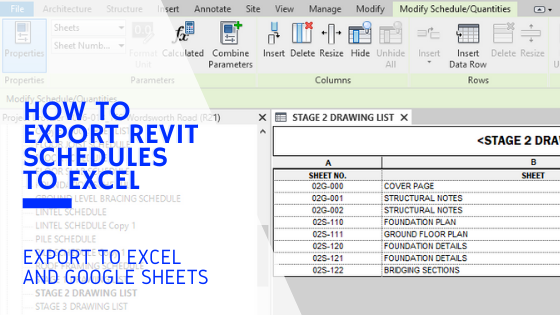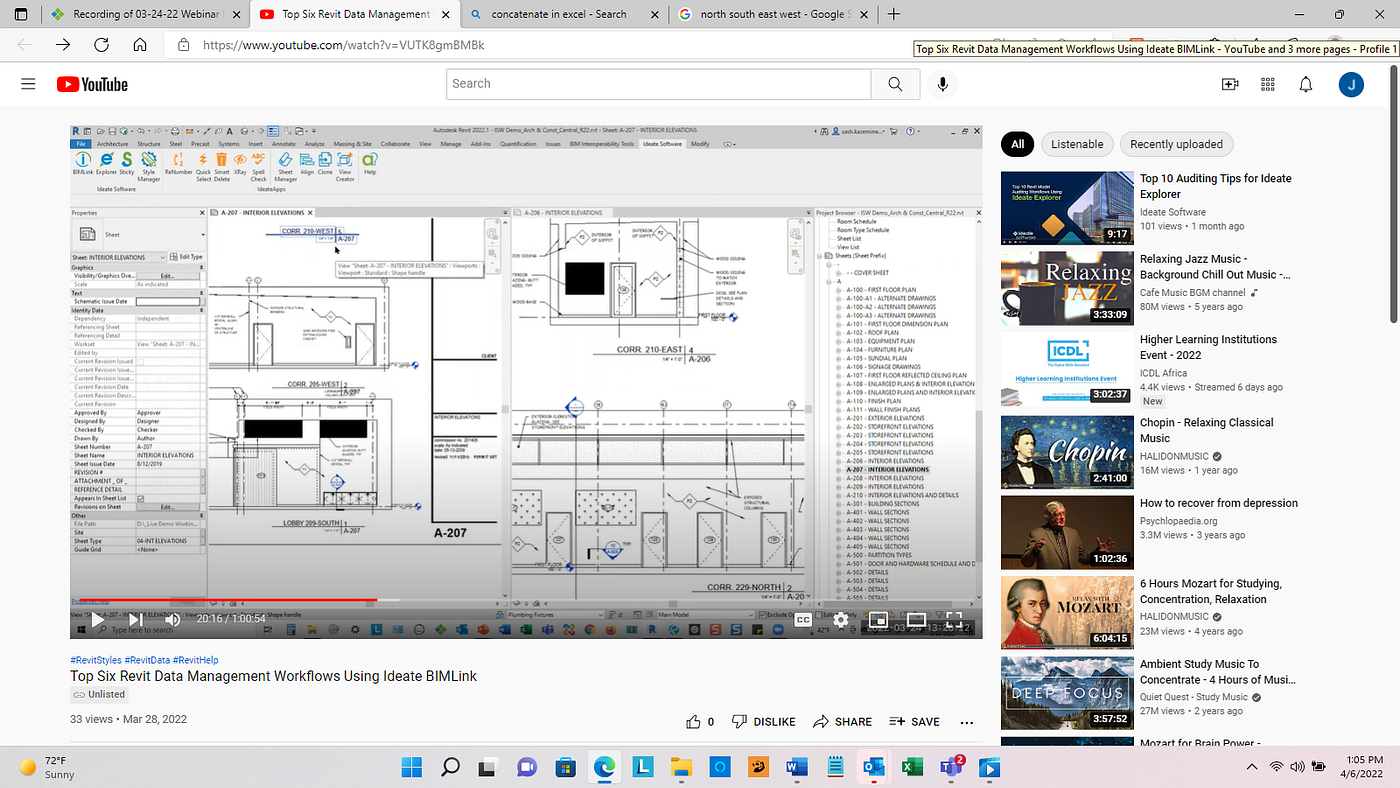Revit Add Ins: Expanding Your Design Capacities
Wiki Article
Excel-to-Revit: A Game-Changing Operations for Architectural Design - Unveiling the Keys
Introducing excel-to-revit, the game-changing process that will certainly change your layout procedure. With excel-to-revit assimilation, you can improve your building layout, unlock performance, and make the most of partnership within your group. Get prepared to take your building layout to the next level with excel-to-revit!The Power of Excel-to-Revit Assimilation

Think of the benefit of being able to modify and upgrade project information in Excel, and instantaneously see those modifications reflected in your Revit version. Say goodbye to manual information entrance or tedious updates. With Excel-to-Revit assimilation, you can save time and lower errors by leveraging the power of Excel's features and formulas to automatically produce accurate information in Revit.
Not only does this integration enhance efficiency, however it also boosts collaboration amongst employee. You can easily share Excel data with colleagues, that can then import the information right into their Revit versions. This promotes a seamless exchange of information and ensures that everyone is collaborating with one of the most updated information.

Streamlining Building Style With Excel-To-Revit
Improving architectural design is simplified with making use of Excel-to-Revit (revit add ins). With this effective combination, you can maximize your workflow and save useful time throughout the design process. By leveraging the capacities of Excel and Revit, you can perfectly move information between both systems, eliminating the requirement for hand-operated data entry and lowering the danger of mistakesExcel-to-Revit allows you to import and export data easily, allowing you to easily update and customize your building layouts. You can create routines, determine amounts, and generate reports in Excel, and afterwards move that information straight into your Revit model. This combination makes sure that your layout information is always updated and integrated, eliminating the requirement for hand-operated updates and decreasing the possibilities of incongruities.
By utilizing Excel-to-Revit, you can likewise make use of the powerful computational capabilities of Excel. You can carry out complex calculations, analyze information, and automate repetitive tasks, all within Excel. With simply a few clicks, you can import the results back right into Revit, permitting you to make enlightened layout decisions and enhance your building designs.
Unlocking Efficiency: Discovering the Excel-to-Revit Operations
Optimize your efficiency by effortlessly incorporating Excel and Revit for a much more efficient workflow. With the Excel-to-Revit operations, you can open an entire new level of performance in your building style process. By utilizing the power of Excel's information administration abilities and combining it with the adaptability and accuracy of Revit, you can improve your design procedure and save important time.Among the crucial benefits of this integration is the capacity to import and export information between Excel and Revit. This suggests that you can conveniently move project details, such as space schedules or product quantities, from one software application to the various other, removing the need for hand-operated data access and lowering the possibilities of mistakes. You can likewise create personalized formulas and calculations in Excel to automate repeated tasks and do complex estimations, which can then be flawlessly integrated right into your Revit models.
In Addition, the Excel-to-Revit workflow permits better sychronisation and collaboration in between staff member. With Excel working as a central data center, multiple staff member can work on various facets of the project all at once, sharing and upgrading details in real-time. This not only enhances interaction but likewise makes certain that everyone is dealing with one of the most current data, getting rid of the danger of inconsistencies.
Taking Full Advantage Of Cooperation: Excel-to-Revit for Architectural Teams
By seamlessly integrating Excel and Revit, building groups can greatly improve partnership and accomplish extra reliable design outcomes. When utilizing this effective workflow, you can easily transfer information in between Excel spread sheets and Revit versions, streamlining the design process and improving communication amongst employee. With Excel-to-Revit assimilation, you can easily import project data, such as room schedules, material quantities, and job specifications, straight into Revit, getting rid of the requirement for hand-operated information access and lowering the opportunities of mistakes. This smooth link enables for real-time updates, making certain that every person is functioning with one of the most updated info and preventing discrepancies between different records.In addition, by leveraging Excel's effective computation capabilities, you can perform intricate computations and analysis on your layout information, driving and providing beneficial understandings educated decision-making. This combination also enables you to export information from Revit to Excel, allowing you to create detailed records, charts, and charts for discussions and analysis. This collective workflow advertises effective communication and control amongst staff member, as Excel serves as a main hub for data monitoring and sharing.
General, by embracing the Excel-to-Revit process, building teams can accomplish greater levels of cooperation, efficiency, and precision in their layout process. revit tool. This integration equips groups to collaborate flawlessly, guaranteeing that every person gets on the same web page and adding to the success of the project
Revealing the Keys of Excel-to-Revit Assimilation

Among the keys of Excel-to-Revit integration is the capability to take advantage of the power of solutions and calculations in Excel to drive specifications and produce facility geometries in Revit. You can connect Excel spreadsheets to Revit families, enabling you to input information straight right into the spreadsheet and have it immediately upgrade in the Revit model. This streamlines the design process and makes sure precision and uniformity throughout the task.
Another trick is the ability to produce custom-made routines and records in Excel, using data drawn out from Revit. This enables you to picture and examine task details revit tools in a means that is not feasible within Revit alone. You can quickly produce quantity take-offs, cost estimates, and task timelines, giving beneficial understandings for decision-making and task administration.
On top of that, Excel-to-Revit combination allows efficient collaboration amongst group members. Multiple users can deal with the very same Excel spread sheet concurrently, making it much easier to collaborate and track changes. You can additionally make use of Excel's commenting function to offer feedback or connect style revisions.
Conclusion
By combining the power of Excel and Revit, architects can currently function a lot more successfully, conserve time, and create better designs. Beginning including excel-to-revit combination into your architectural design procedure today and change the means you function.With simply a few clicks, you can import the results back right into Revit, enabling you to make educated design choices and maximize your architectural designs.
By making use of the power of Excel's information administration capabilities and incorporating it with the versatility and precision of Revit, you can streamline your layout process and conserve useful time.
By perfectly integrating Excel and Revit, building teams can greatly boost partnership and achieve a lot more efficient layout results. When using this effective workflow, you can conveniently transfer information between Excel spread sheets and Revit designs, simplifying the style process and enhancing communication among team participants.Furthermore, by leveraging Excel's effective calculation capabilities, you can perform complex calculations and evaluation on your layout information, driving and supplying useful understandings notified decision-making.
Report this wiki page